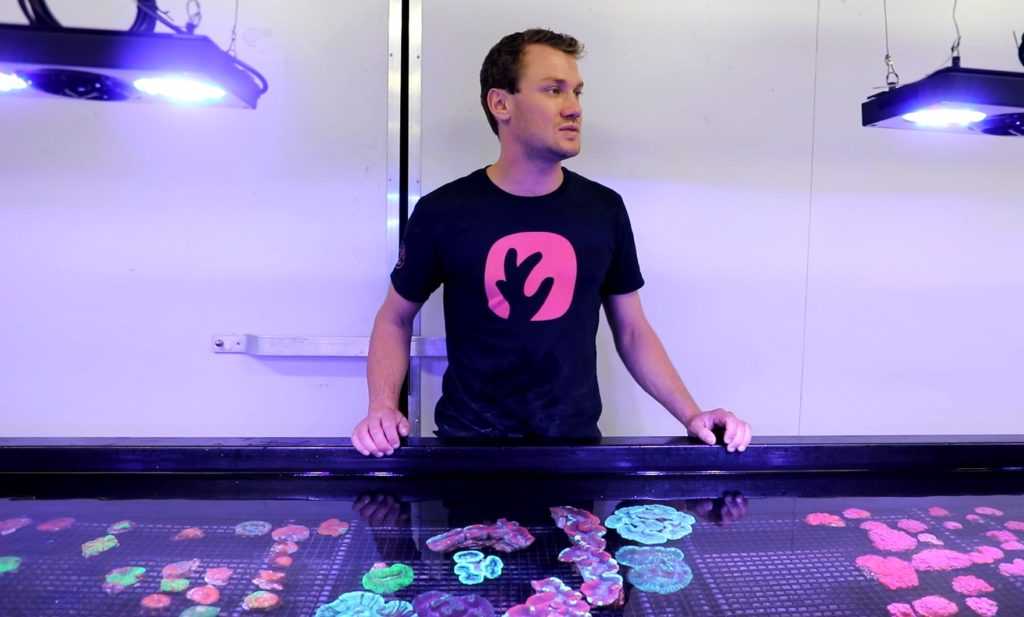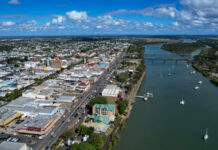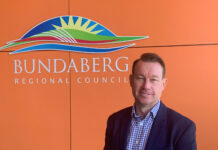
Monsoon Aquatics is one of Australia’s leading exporters of live coral and fish and is looking to achieve a world first from its new Burnett Heads facility.
The coral farm is hoping to expand into simulated coral spawning and, if successful, they believe they will be the first in the world to make it commercially viable.
Company director Daniel Kimberley said with facilities in Darwin and Cairns he had recently made the decision to set up shop in the Bundaberg Region.
“I spent the last 18 years in Darwin with my family and I wanted a change of climate,” Daniel said.
“I wanted an excuse to move out of Darwin and Bundaberg was perfect to expand the business in.”
Despite having established in other areas, Daniel said the Burnett Heads facility would be the focus of Monsoon Aquatic’s future expansion.
“The facility in Bundaberg is going to be our aquaculture hub,” he said.
“This is going to be where we base the business’ aquaculture operations and, in the future, I expect we’re going to have up to 10 to 15 staff working here.
“We have a long-term plan to be producing a lot of aquaculture coral from this site here in Bundaberg.”
The coral produced is provided to public and home aquariums throughout Australia and the world.
“We export to pretty much everywhere,” Daniel said.
“We also send all around Australia so we do supply the domestic market as well but I’d say by far our biggest customer is America.
“We supply China, Japan, Hong Kong, France, Italy, Germany … it’s probably easier to say where we don’t supply.”
Monsoon Aquatics has plans to be world first
Monsoon Aquatic Aquaculture and Operations Manager Jeffrey Bonnick said he was excited to be a part of the team during the set-up phase of the business.
The marine scientist is in the process of designing the aquaculture operations and will be developing a coral spawning system.
“Coral spawning out in the wild traditionally happens between one to two times a year; some species can actually go as often as four times a year,” Jeffrey said.
“It’s generally just a mass release of gametes or sperm and eggs into the water.
“So, what we’re trying to do here is … be the first facility to make it commercially viable if we can get it under way.”
What that would mean is more consistent products for sale via one of the most sustainable processes available.
“As far as I know on this sized scale it hasn’t been done in the world.”
Jeffrey said part of that process was developing a custom-made facility that would allow for full climatic control.
“We’ll be able to control the temperature, the light, the moon phases, the height of the water, the flow to simulate tides,” he said.
“We’re trying to get a whole picture of the marine environment.
“We want to basically be able to, every three or four months, be able to induce coral to spawn and have a consistent role out of coral year-round.”
Sustainability at core of practices
Monsoon Aquatics is already in business, using traditional “fragging” techniques to produce coral.
“We have boats and divers that go out to areas on the reef all around Australia and collect really small pieces of coral that we then bring back here and grow in our facility,” Daniel said.
“The divers will swim over hundreds of pieces of coral to find those exact right ones that the market demands.
“Once we have them in house here, we can cut them up, just like you would in your garden making cuttings, and make multiple pieces out of that.”
Daniel said the coral was harvested sustainably with similar licences to those issued to commercial fisherman.
“The sustainability side of the business is really heavily regulated by the government,” he said.
For that reason, he said Australian exporters had a good reputation in overseas markets.
“Rightly so because we are well managed and the people who work as fishermen, we love it.
“We really want to protect what we do and our livelihoods.
“Overseas we can’t really keep up with demand so we’re in a really good position where we can pick and choose our customers and actually align our business with other businesses who share the same values as we do.”
Monsoon Aquatics also has a contract to supply one of the biggest public aquariums in China.
“Thousands if not millions of people in China are seeing our corals on display and learning about the reef and learning about how to protect the reef and value it,” he said.
“I really believe that if people can’t see something in front of them they’re not going to value it and they’re not going to want to protect it.
“Not everyone can get out into the ocean and dive, you know there’s a very small amount of people that can actually do that.
“So being able to show these corals to the world, particularly somewhere like China to a public aquarium, I think has a lot of value.”
Burnett Heads facility perfect for aquaculture operations
The availability of the Burnett Heads site was one of the driving forces behind Daniel’s relocation to the region.
“We’re on the mouth of the Burnett River so we have an actual ex-aquaculture facility, we have salt water that we can access and close to an airport.
“The choice for here was the site itself being so perfect for our aquaculture operation.”
Jeffrey said the facility had a pump line which could draw fresh ocean water from about 2km out to sea.
“One of our sheds is actually fully insulated and climate controlled so this way we can optimise coral growth and give them the ideal conditions.
“As well as that we have the potential for future expansion as we have a couple of concrete pads that are already set up with full plumbing ready to go.
“This is where we will actually be doing outdoor grow out of our spawned corals and potential for spawned clams as well.”
- Want to read more about the reef? Check out our coverage of the Lady Musgrave Experience







